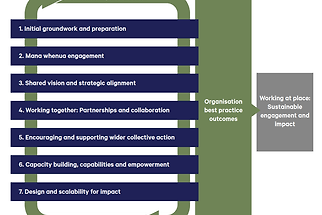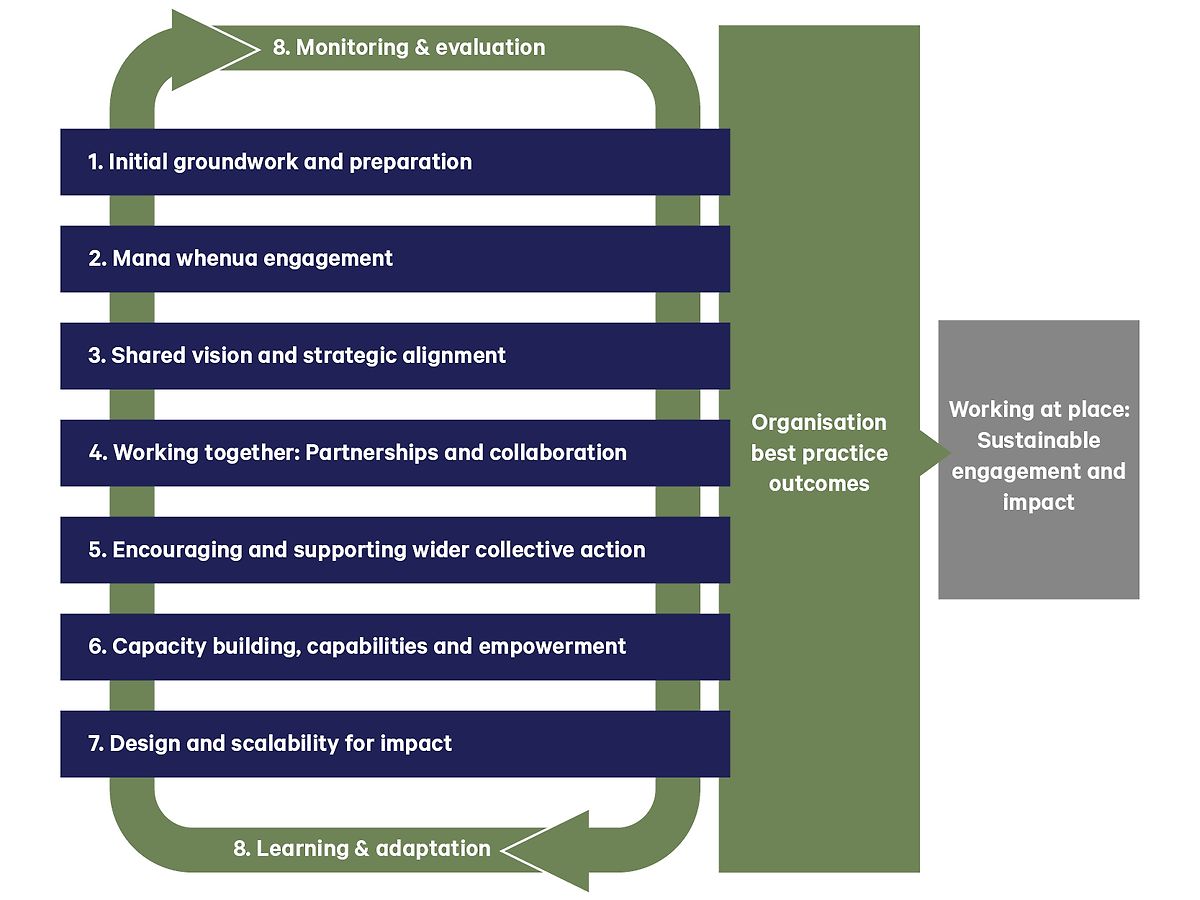

Place-Based Engagement & Impact Tool

The Place-Based Engagement & Impact Tool is a strategic assessment tool developed within the evaluation workstream of the Living Water partnership.
The tool combines international best practices and local evaluation findings to help guide organisations and sector bodies in place-based initiatives, such as environmental and community programmes. It aims to improve the planning, execution, and evaluation of programmes, emphasising thorough preparation, inclusive engagement, strategic alignment and collaborations, collective action, capacity and capability building, scalability and ongoing monitoring and evaluation practices to improve outcomes and sustainability.
The tool supports facilitated reflective and inclusive discussions among stakeholders, and supports adaptive management practices. It incorporates a traffic-light system to aid in performance evaluation, encouraging stakeholders to reflect critically on their contributions and areas needing improvement. The tool can help programme staff and partners understand and enhance how diverse actions come together into collective synergistic outcomes. By using this tool, participants can gain insights into the interconnectedness of their efforts, fostering a holistic approach to environmental and community projects.
The tool is particularly valuable for leaders and facilitators who recognise the need for comprehensive tools that help unify varied stakeholder contributions towards shared environmental goals. The interconnections and flow of the processes are visually represented in the below diagram, which illustrates the dynamic nature of the tool and components.

Dr Will Allen

Viv Sherwood

Developed with a foundation in implementation science and evaluation, the tool aligns with broader environmental management principles outlined in key literature and supports the Living Water programme's decade-long experiences. It serves as both a retrospective aid that validates the relevance of each element based on past initiatives and a forward-looking guide that helps those managing at-place initiatives adapt their programmes to evolving environmental and social contexts. This tool is designed to be dynamic and adaptable, capable of evolving with new insights and developments.
The eight key criteria
The Place-Based Engagement & Impact Tool is structured around eight key criteria:
- 1. Initial groundwork and preparation: Emphasising the importance of organisational conversations to identify the current state of involvement and potential barriers, along with initial community discussions.
- 2. Mana whenua engagement: Recognising the need to understand cultural contexts, have basic cultural competencies, and early, responsive engagement with mana whenua.
- 3. Shared vision and strategic alignment: Focusing on developing a shared vision that aligns with local values and broader sustainability goals through processes that are inclusive localised processes.
- 4. Working together: Partnerships and collaborations: Establishing respectful, balanced partnerships that build on shared vision and strategic alignment.
- 5. Encouraging and supporting wider collective action: Fostering wider buy-in and adaptive engagement at community and regional levels through approaches such as extension agents, behaviour change and community development strategies.
- 6. Capacity building, capabilities, and empowerment: Enhancing technical and interpersonal capacities and capabilities to support meaningful engagement and contribution across key activities.
- 7. Design and scalability for impact: Developing scalable tools and practices that can be adapted to different contexts while maintaining effectiveness.
- 8. Monitoring, evaluation, learning, and adaptation: Implementing comprehensive monitoring and evaluation mechanisms that support ongoing learning and adaptation.
Development and methodological basis
In developing the Place-Based Engagement & Impact Tool, we drew upon a rich background in implementation and evaluation science, transitions planning, and international development. This approach is rooted in a comprehensive understanding of decision-making, collaboration structures, and operational delivery.
The methodology emphasises the importance of iterative processes and the flexibility needed to adapt to changing circumstances, crucial for effective environmental management and community engagement. By integrating these broader perspectives, the tool provides a lens programme teams can use to reflect on and learn from their different experiences across ‘at-place’ initiatives. This reflection is vital for enhancing the understanding and implementation of sustainable practices, ensuring that efforts make a difference.